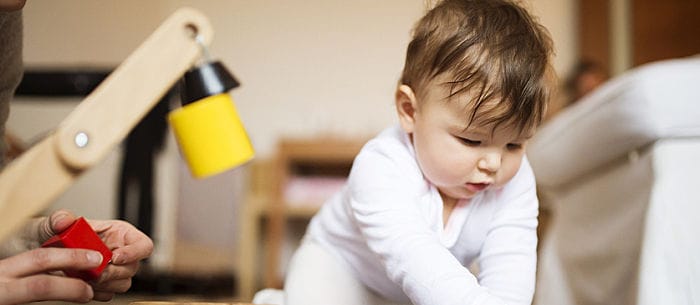Do you have a bundle of joy headed your way? If so, you’ll need a method to transport him from the hospital to his new home — a rear-facing car seat! But how do you choose the right rear-facing car seat for your child? It might be easier than you think. “The general response to this question is simple,” says Bob Wall, a car seat expert and Global Advocate for Nuna Baby Essentials. “You’ll need a car seat that does three things: one that fits your child, one that fits your vehicle, and one that you will use correctly every time.”
Requirements for Rear-Facing Seats
Ultimately, you’ll want to keep your baby in a rear-facing car seat as long as possible, or at least up until age 2. The requirements for choosing a rear-facing car seat are very specific and depend on your child’s size. Legally, when you’re allowed to turn your child varies by state, but the American Academy of Pediatrics strongly recommends not turning your child around until age 2.
“At a minimum, infants should remain rear-facing until 1 year old and 20 pounds. However, safety experts agree: Infants and young children should remain rear-facing as long as possible, based upon their size and developmental age, as well as the limits of the rear-facing infant seat,” says Sarah Haverstick, a safety advocate and certified child passenger safety technician for Evenflo.
“Even If your child has outgrown their infant seat, you should move to a convertible car seat installed in a rear-facing position and keep your child rear-facing until they reach the upper weight and height limits of the seat. The instruction manual for your car seat will provide you with guidance about the proper time to switch your child to the forward-facing position.”
Finding the Right Car Seat
You’ll have the chance to choose from three different types of rear-facing car seats. These are rear-facing only, convertible seats and 3-in-1 seats. Convertible products can be switched from rear- to front-facing, while the 3-in-1 option can also be used as a booster seat. These two are often larger than rear-facing only options, which means they can be used by your child for longer and may save you money.
You need to first look for a seat that fits your child’s size. “If you get a seat that is too small, the child will not fit correctly or be comfortable, and they will not have the best protection during a crash,” Wall says. “If the seat is too big and the child does not fit correctly, they can again be injured. So take your time and make sure your child fits the size, and in some cases the age requirements, for the seat you are looking to buy.”
Then you should make sure the car seat fits your vehicle. “If the seat fits your child and is not compatible with your vehicle, then you are not really providing the gold standard of safety,” explains Wall. “Some vehicles are problematic when attempting to install some car seats. This is due to the fact that vehicles are made with adults in mind.
What is safest for the average-size adult may not be the best fit for your car seat. The only way to know is to try it. If it fits in the vehicle correctly, then you may have found the seat for your child. The correct fit is the seat that is locked in, prior to the crash, at the correct angle with your child secured in the harness according to the car seat and vehicle’s manufacturers instructions.”
Practicality Matters
When all is said and done, proper use is what really counts, so choose a product that drivers in your family can handle. “Ease of use is a major issue in the correct selection of a car seat,” Wall adds. “If it’s too complicated to use, then you may not use it correctly, leaving your child exposed to unnecessary injury during a crash.” Should the seat you decide on be a bit too big, the American Academy of Pediatrics offers a few safety and installation tips regarding car seats that may be helpful for parents.
There’s no need to rush the transition, so if your little one isn’t quite at the right age or weight, hold off on making the switch.
And read more about car seat stages.
Christina Montoya Fiedler is a Los Angeles-based parenting writer who has two kids — one in a rear-facing car seat and the other in a booster seat. See more of her work at Red Tricycle.






